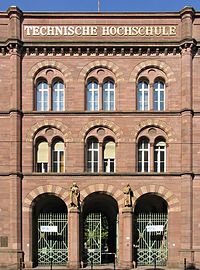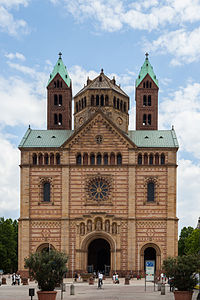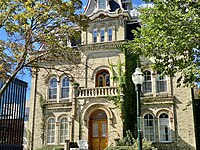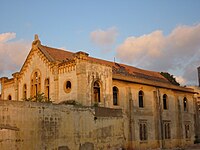
Back Rundbogenstil Catalan Obloučkový styl Czech Rundbuestil Danish Rundbogenstil German Rundbogenstil Spanish راندبوگنستیل Persian Pyörökaarityyli Finnish Rundbogenstil French Styl arkadowy Polish Rundbogenstil Romanian












Rundbogenstil (round-arch style) is a nineteenth-century historic revival style of architecture popular in the German-speaking lands and the German diaspora. It combines elements of Byzantine, Romanesque, and Renaissance architecture with particular stylistic motifs.[1] It forms a German branch of Romanesque Revival architecture sometimes used in other countries.
- ^ Strauss, Gerhard & Olbrich, Harald: "Eintrag Rundbogenstil." Lexikon der Kunst. Architektur, bildende Kunst, angewandte Kunst, Industrieformgestaltung, Kunsttheorie. (in German.) Leipzig: Seemann. Band 6, p. 293 ff.